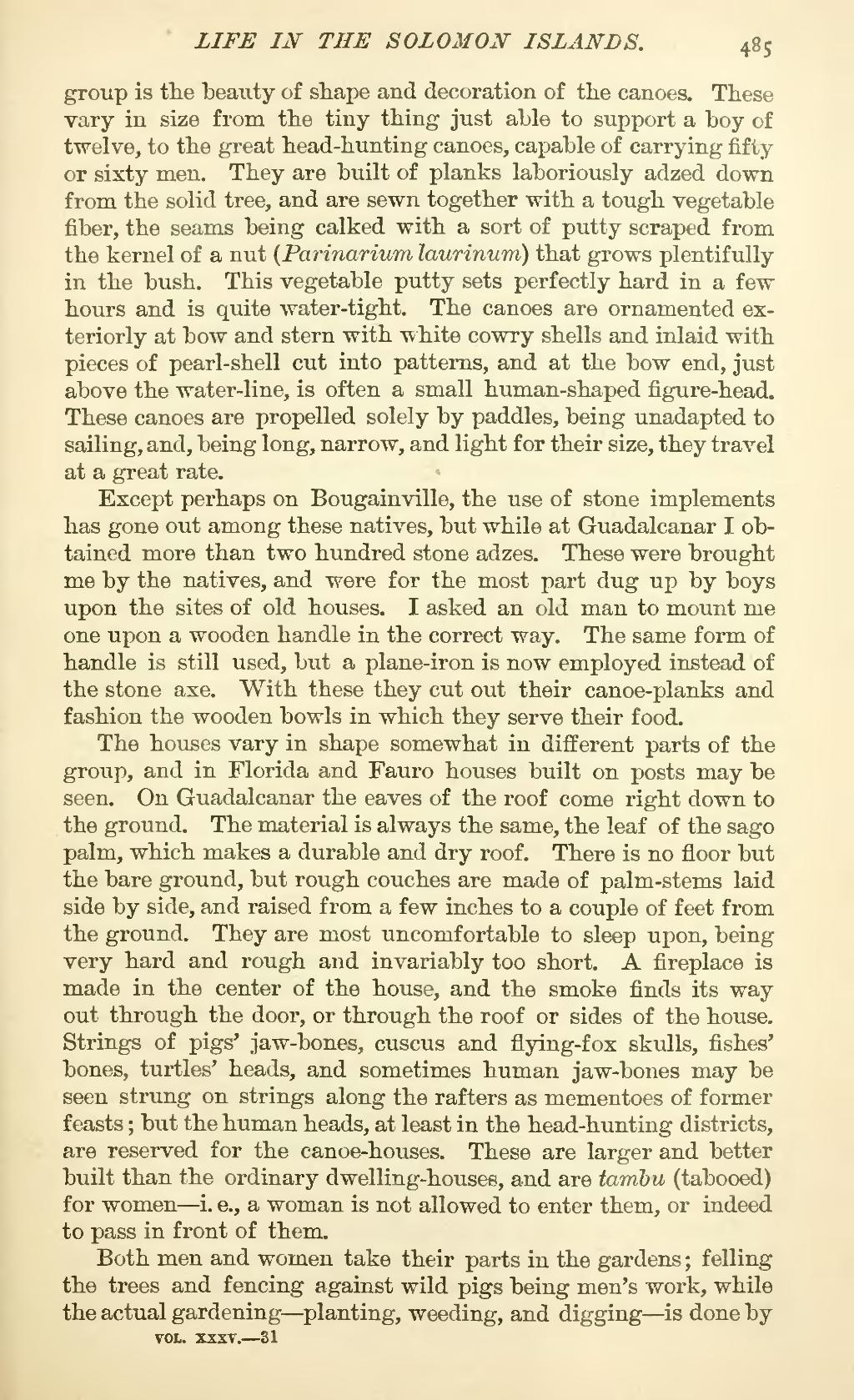group is the beauty of shape and decoration of the canoes. These vary in size from the tiny thing just able to support a boy of twelve, to the great head-hunting canoes, capable of carrying fifty or sixty men. They are built of planks laboriously adzed down from the solid tree, and are sewn together with a tough vegetable fiber, the seams being calked with a sort of putty scraped from the kernel of a nut (Parinarium laurinum) that grows plentifully in the bush. This vegetable putty sets perfectly hard in a few hours and is quite water-tight. The canoes are ornamented exteriorly at bow and stern with white cowry shells and inlaid with pieces of pearl-shell cut into patterns, and at the bow end, just above the water-line, is often a small human-shaped figure-head. These canoes are propelled solely by paddles, being unadapted to sailing, and, being long, narrow, and light for their size, they travel at a great rate.
Except perhaps on Bougainville, the use of stone implements has gone out among these natives, but while at Guadalcanar I obtained more than two hundred stone adzes. These were brought me by the natives, and were for the most part dug up by boys upon the sites of old houses. I asked an old man to mount me one upon a wooden handle in the correct way. The same form of handle is still used, but a plane-iron is now employed instead of the stone axe. With these they cut out their canoe-planks and fashion the wooden bowls in which they serve their food.
The houses vary in shape somewhat in different parts of the group, and in Florida and Fauro houses built on posts may be seen. On Guadalcanar the eaves of the roof come right down to the ground. The material is always the same, the leaf of the sago palm, which makes a durable and dry roof. There is no floor but the bare ground, but rough couches are made of palm-stems laid side by side, and raised from a few inches to a couple of feet from the ground. They are most uncomfortable to sleep upon, being very hard and rough and invariably too short. A fireplace is made in the center of the house, and the smoke finds its way out through the door, or through the roof or sides of the house. Strings of pigs' jaw-bones, cuscus and flying-fox skulls, fishes' bones, turtles' heads, and sometimes human jaw-bones may be seen strung on strings along the rafters as mementoes of former feasts; but the human heads, at least in the head-hunting districts, are reserved for the canoe-houses. These are larger and better built than the ordinary dwelling-houses, and are tambu (tabooed) for women—i. e., a woman is not allowed to enter them, or indeed to pass in front of them.
Both men and women take their parts in the gardens; felling the trees and fencing against wild pigs being men's work, while the actual gardening—planting, weeding, and digging—is done by
